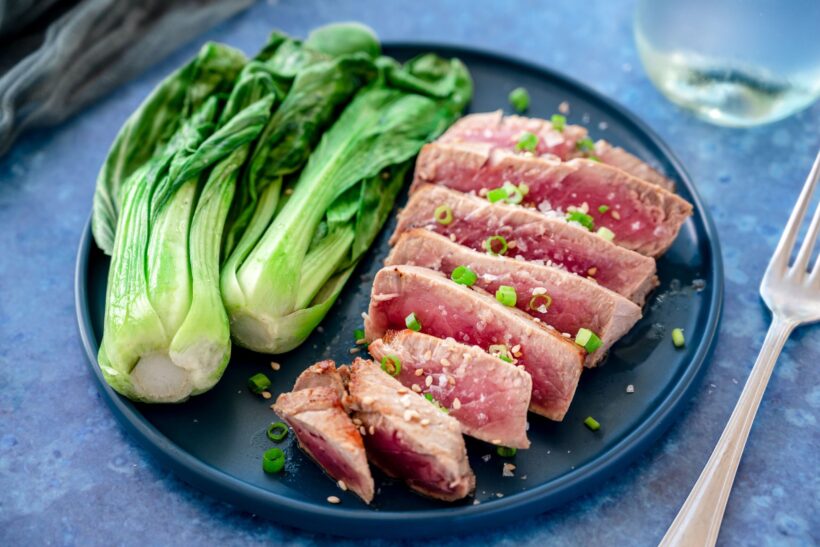
Tuna is known for its robust and meaty texture, as well as its distinctive, flavorful profile, thanks to its abundance of natural oils. But it’s vital to remember that tuna has a shorter shelf life than certain other fish kinds because of its oily quality. To ensure the best quality, it’s advisable to select tuna that is as fresh as possible.
When purchasing tuna from tuna loin supplier, you’ll typically find it already prepared for use, having been skinned, deboned, and conveniently portioned. This makes it an incredibly convenient choice, as minimal preparation is required.
With tuna, the focus is primarily on adding flavors and enhancing its existing qualities, rather than spending excessive time on prep work. If you are about to cook tuna loin, you better stay tuned and read the following discussion.
Selecting the Perfect Tuna Loin
Before going into the cooking journey, it’s important to understand the different tuna species available in the market. Some most popular options such as Yellowfin, albacore, and bluefin and each of them has its unique characteristics.
When choosing a tuna loin, pay attention to freshness indicators such as bright red color, shiny skin, and a fresh oceanic smell. Quality tuna should have a firm texture with minimal blemishes and consistent marbling, which contributes to its flavor and tenderness. Additionally, consider sourcing tuna from sustainable fisheries to support responsible fishing practices.
Preparing the Tuna Loin for Cooking
Once you have selected the perfect tuna loin, it’s essential to prepare it properly for cooking. Clean the loin by removing any residual blood or bones and trim off any excess fat.
Seasoning and marinating options can vary depending on your desired flavors, ranging from simple salt and pepper to exotic spice blends or citrus-infused marinades. Remember to store the tuna loin in the fridge with airtight packaging. This helps to preserve the freshness of tuna loin.
Cooking Techniques for Tuna Loin
Tuna loin that you can get from tuna loin supplier can be prepared using various cooking techniques, each offering a unique culinary experience. Here are several techniques to cook your perfect tuna loin.
Grilling
Achieving a flavorful sear Grilling is a popular method for cooking tuna loin, as it imparts a smoky flavor and creates a beautiful sear on the outside while keeping the inside tender and juicy. Start by preheating the grill to medium-high heat. Brush the tuna loin with a high-heat cooking oil to prevent sticking and season it with salt and pepper or your desired spices.
Place the loin on the grill grates and cook for about 2-3 minutes per side, depending on the thickness, until it develops grill marks and reaches the desired level of doneness. Be cautious not to overcook the tuna, as it can become dry.
Read also : Top 5 Favorite Food Vloggers and Bloggers
Pan-searing
Creating a crispy crust Pan-searing is an excellent technique for achieving a crispy crust while maintaining a moist and tender center in tuna loin. You may begin by heating a nonstick pan or a skillet over medium-high heat before adding a little amount of oil with a high smoke point, such as vegetable or avocado oil.
Season the tuna loin with salt, pepper, or your preferred spices. Carefully place the loin in the hot pan and sear each side for about 1-2 minutes, allowing the surface to develop a golden-brown crust. Adjust the cooking time based on the thickness of the loin and your desired level of doneness. Remember to avoid overcrowding the pan, as it can cause the tuna to steam instead of sear.
Sashimi-style
Emphasizing freshness and texture For those who appreciate the delicate flavors and pristine texture of raw fish, sashimi-style preparations are an ideal choice. To enjoy tuna loin sashimi-style, it is crucial to start with the freshest possible fish.
Begin by using a sharp knife to slice the loin into thin, even pieces. Arrange the slices on a chilled plate and serve immediately, accompanied by soy sauce, wasabi, pickled ginger, and other traditional sashimi condiments. The focus is on the natural taste and texture of the tuna, so minimal seasoning is used to allow its freshness to shine.
Baking and roasting
Retaining moisture and tenderness Baking or roasting tuna loin in the oven is an excellent technique for preserving moisture and tenderness. Preheat the oven to a moderate temperature, around 375°F (190°C). Place the seasoned loin on a baking sheet or in a roasting pan, and cook it for approximately 10-15 minutes, depending on the thickness and desired level of doneness.
It is important to monitor the internal temperature using a meat thermometer to ensure it reaches an appropriate level, such as 125-130°F (52-55°C) for medium-rare. Baking or roasting the tuna allows for even cooking and the development of flavors while maintaining its delicate texture.
Enhancing the Flavor of Tuna Loin
To elevate the flavor profile of your tuna loin that you get from tuna loin supplier, consider pairing it with complementary ingredients. Fresh herbs, citrus fruits, soy sauce, and ginger are popular choices that enhance the natural taste of the tuna.
Experiment with creating tantalizing marinades and sauces, incorporating ingredients such as garlic, honey, sesame oil, or balsamic vinegar. Furthermore, explore different spice rubs and seasonings to add a kick of flavor to your dish.
Tips for Buying and Storing Tuna Loin
When buying tuna loin, it’s essential to understand labels and certifications to ensure you’re making an informed choice. Look for labels indicating sustainable fishing practices or certifications such as Marine Stewardship Council (MSC) or Dolphin Safe.
To maintain the quality of your tuna loin, store it in airtight packaging in the refrigerator and consume it within a few days of purchase. Avoid freezing tuna loin, as it may compromise the texture and flavor.
Bottom Line
Choosing and cooking the perfect tuna loin requires attention to detail and a passion for culinary exploration. By considering factors such as species selection, freshness, cooking techniques, flavor enhancements, and presentation, you can elevate the taste and visual appeal of your tuna dishes.
Don’t be afraid to experiment with different techniques and flavors to discover your personal preferences. The satisfaction of savoring a perfectly cooked tuna loin is a culinary delight that is worth the effort. So go ahead, go buy it at tuna loin supplier, and dive into the world of tuna loin and unleash your creativity in the kitchen. Bon appétit!
